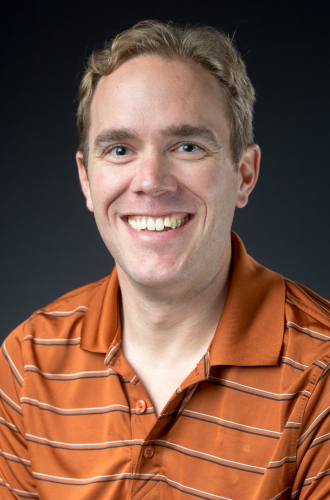-

-
Daniel J Dickinson
Associate Professor
Molecular Biosciences
Lorene Morrow Kelley Endowed Faculty Fellowship Fund (Holder)Biochemical basis of cell polarization during development; single-molecule and high-resolution microscopydaniel.dickinson@austin.utexas.edu
Phone: 512-232-2916
Office Location
PAT 206
Postal Address
2415 SPEEDWAY
AUSTIN, TX 78712-
Daniel Dickinson’s research focuses on the molecular mechanisms of cell polarization, which is a basic property of animal cells that is often disrupted in human diseases (especially cancer). He uses a unique, interdisciplinary approach that combines single-molecule microscopy, targeted genome editing, biochemistry and fluorescence imaging of living cells. Dickinson received his B.S. in biochemistry from Iowa State University in 2005, then spent a year as a Fulbright scholar in Switzerland before earning a Ph.D. at Stanford in 2011. Prior to joining UT, he has been a postdoctoral fellow at the University of North Carolina at Chapel Hill.
-
Cell polarity is a basic property of eukaryotic cells, in which two opposite sides of the cell acquire different properties. Cells must polarize properly in order to form tissues during embryonic development, and polarity is often disrupted in disease. Our lab operates at the interface between biochemistry and cell biology, with the goal of understanding how cells can polarize in response to signals from their environment. Some specific questions that interest us include:
-
At a basic level, how can proteins that are 10 nm in size organize spatial patterns in cells that are 10 µm in size? We study the biochemical mechanisms and interactions that give rise to spatial organization.
-
How do proteins move within cells to establish polarity? Specifically, what forces are present that allow polarity proteins to overcome diffusion and become enriched asymmetrically within the cell?
-
How can a common set of polarity signaling proteins generate polarity in a variety of different cell types during development?
-
How can a conserved singaling machine, such as the cell polarity program, evolve to take on new functions?
Please visit http://www.utdickinsonlab.org for a description of our research.
-
-
A complete list of our publications can be found at NCBI.
-














